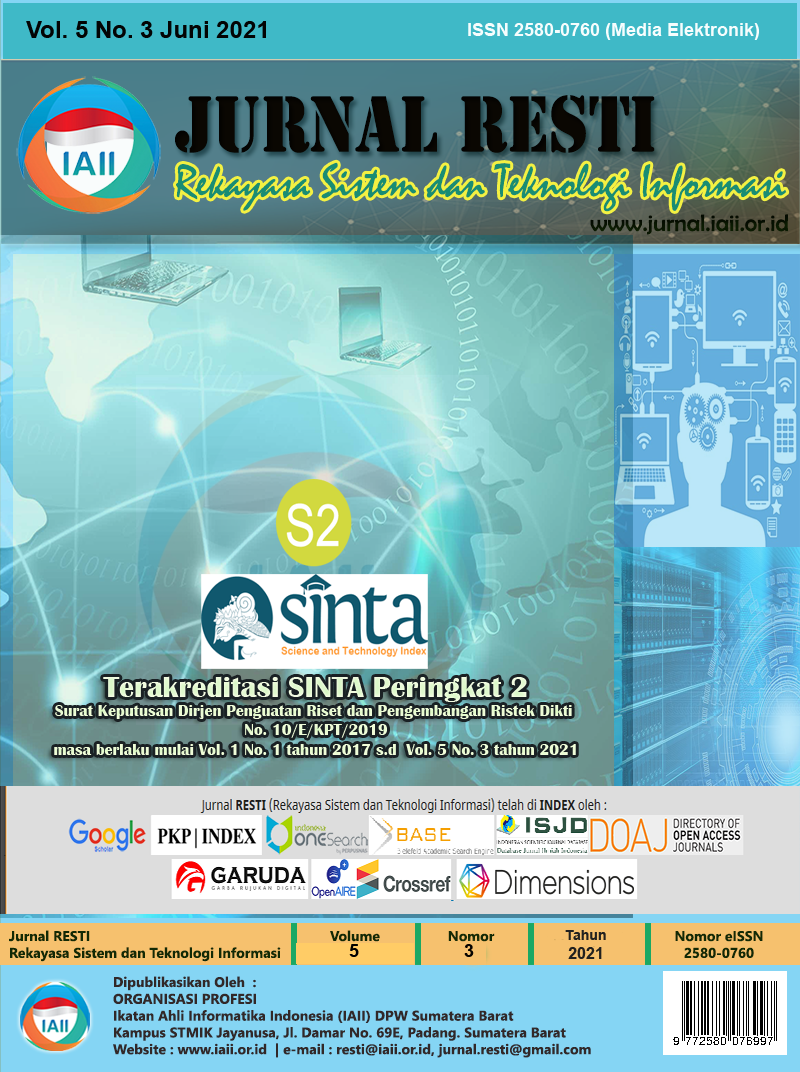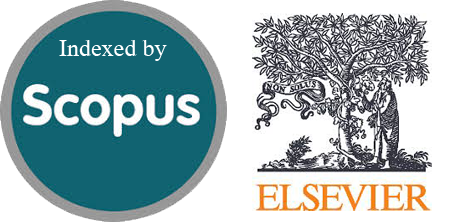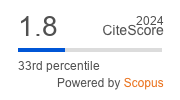Optimalisasi Penyaluran Bantuan Pemerintah Untuk UMKM Menggunakan Metode Fuzzy C-Means
Abstract
Indonesian MSMEs were very seriously affected by the Covid-19 pandemic, which caused the Indonesian economy has experienced deceleration. The Indonesian government has taken several steps to keep economic activity running, such as direct cash assistance for micro-scale businesses but is having problems in obtaining real data so that assistance is not on target, the clustering method using Fuzzy C-Means (FCM) is used for grouping MSME data. FCM allows the data to be a member of all clusters in which each cluster has a membership degree value of 0-1. The data used is from the website of the Sleman Regency Cooperatives and SME Service. FCM classifies MSME data based on the attributes of revenue, assets and number of workers. This research resulted in grouping MSME data into 3 priority levels for MSMEs in obtaining assistance, namely high priority, medium priority, and low priority. The results of this study show that the number of MSMEs with high priority is 23,023 MSMEs, medium priority is 9,774 MSMEs and low priority is 3,159 MSMEs. The validation test of the FCM method uses the Partition Coefficient Index (PCI) which has a value of 0.826 which means that value good because it is close to 1.
Downloads
References
Badan Pusat Statistik, “Pertumbuhan Ekonomi Indonesia Triwulan II-2020,” Www.Bps.Go.Id, no. 64/08/Th. XXIII, pp. 1–12, 2020, [Online]. Available: https://www.bps.go.id/pressrelease/2020/08/05/1737/-ekonomi-indonesia-triwulan-ii-2020-turun-5-32-persen.html.
A. K. Pakpahan, “Covid-19 dan Implikasi Bagi Usaha Mikro, Kecil, dan Menengah,” J. Ilm. Hub. Int. Ed. Khusus, no. April, pp. 59–64, 2020, [Online]. Available: http://journal.unpar.ac.id/index.php/JurnalIlmiahHubunganInternasiona/article/view/3870/2903.
S. Aliyani Firdaus, I. Fadilah Ilham, L. Putri Aqidah, S. Aliyani Firdaus, S. Agung Dwi Astuti, and I. Buchori, “Strategi UMKM untuk Meningkatkan Perekonomian selama Pandemi Covid-19 pada saat New Normal,” OECONOMICUS J. Econ., vol. 5, no. 1, pp. 46–62, 2020, doi: 10.15642/oje.2020.5.1.46-62.
L. Marlinah, “Peluang dan Tantangan UMKM Dalam Upaya Memperkuat Perekonomian Nasional Tahun 2020 Ditengah Pandemi Covid 19,” J. Ekon., vol. 22, no. 2, pp. 118–124, 2020.
“Kemenperin: IKM Terdampak Covid-19 Diusulkan Dapat Pinjaman Lunak dan Ikut Program Prakerja.” https://www.kemenperin.go.id/artikel/21700/IKM-Terdampak-Covid-19-Diusulkan-Dapat-Pinjaman-Lunak-dan-Ikut-Program-Prakerja (accessed Sep. 28, 2020).
“Menaker Ida: Bantuan Subsidi Upah Lengkapi Program Pemerintah yang Lain : Berita : Kementerian Ketenagakerjaan RI.” https://kemnaker.go.id/news/detail/menaker-ida-bantuan-subsidi-upah-lengkapi-program-pemerintah-yang-lain (accessed Sep. 28, 2020).
“Kementerian Koperasi dan Usaha Kecil dan Menengah - www.depkop.go.id.” http://www.depkop.go.id/read/kemenkopukm-upayakan-bantuan-untuk-usaha-mikro-tepat-sasaran-melalui-akurasi-data (accessed Sep. 28, 2020).
M. H. J. and P. Jian and Kamber, “Data Mining Techniques, Third Edition,” p. 847, 2011.
A. K. Dubey, U. Gupta, and S. Jain, “Comparative study of K-means and fuzzy C-means algorithms on the breast cancer data,” Int. J. Adv. Sci. Eng. Inf. Technol., vol. 8, no. 1, pp. 18–29, 2018, doi: 10.18517/ijaseit.8.1.3490.
R. Rustiyan and M. Mustakim, “Penerapan Algoritma Fuzzy C Means untuk Analisis Permasalahan Simpanan Wajib Anggota Koperasi,” J. Teknol. Inf. dan Ilmu Komput., vol. 5, no. 2, p. 171, 2018, doi: 10.25126/jtiik.201852605.
B. A. Dermawan and T. Djatna, “Optimasi Fuzzy C-Means Clustering Untuk Data Besar dengan Pemrograman R,” UNSIKA Syntax J. Inform., vol. 5, no. 2, pp. 128–134, 2016, doi: 10.35706/syji.v5i2.706.
R. Syarif, M. T. Furqon, and S. Adinugroho, “Perbandingan Algoritme K-Means Dengan Algoritme Fuzzy C Means ( FCM ) Dalam Clustering Moda Transportasi Berbasis GPS,” J. Pengemb. Teknol. Inf. dan Ilmu Komput. Univ. Brawijaya, vol. 2, no. 10, pp. 4107–4115, 2018, [Online]. Available: http://j-ptiik.ub.ac.id/index.php/j-ptiik/article/view/2852.
N. Agustina and P. Prihandoko, “Perbandingan Algoritma K-Means dengan Fuzzy C_Means Untuk Clustering Tingkat Kedisiplinan Kinerja Karyawan (Studi Kasus: Sekolah Tinggi Teknologi Bandung),” J. RESTI (Rekayasa Sist. dan Teknol. Informasi), vol. 2, no. 3, pp. 621–626, 2018, doi: 10.29207/resti.v2i3.492.
P. R. N. Saputra and A. Chusyairi, “Perbandingan Metode Clustering dalam Pengelompokan Data Puskesmas,” J. RESTI (Rekayasa Sist. dan Teknol. Informasi), vol. 4, no. 6, pp. 1077 – 1084, 2020.
P. E. Mas`udia, F. Arinie, and L. D. Mustafa, “Clustering Data Remunerasi Dosen Untuk Penilaian Kinerja Menggunakan Fuzzy c-Means,” J. RESTI (Rekayasa Sist. dan Teknol. Informasi), vol. 2, no. 1, pp. 288–294, 2018, doi: 10.29207/resti.v2i1.97.
N. Puspitasari, R. Rosmasari, and S. Stefanie, “Penentuan Prioritas Perbaikan Jalan Menggunakan Fuzzy C-Means : Studi Kasus Perbaikan Jalan Di Kota Samarinda,” J. Teknol. dan Sist. Komput., vol. 5, no. 1, p. 7, 2017, doi: 10.14710/jtsiskom.5.1.2017.7-14.
J. Liu and C. Wu, “Company financial path analysis using fuzzy c-means and its application in financial failure prediction,” J. Bus. Econ. Manag., vol. 19, no. 1, pp. 213–234, 2018, doi: 10.3846/16111699.2017.1415959.
M. Premasundari and C. Yamini, “a Violent Crime Analysis Using Fuzzy C-Means Clustering Approach,” Ictact J. Soft Comput., vol. 09, no. April, pp. 2229–6956, 2019, doi: 10.21917/ijsc.2019.0270.
F. K. Siti Monalisa, Achmad Harpin Asrori, “Sistem Rekomendasi Produk Menggunakan Model RFM , AHP dan Ranked,” J. RESTI (Rekayasa Sist. dan Teknol. Informasi), vol. 3, no. 2, pp. 100–105, 2019.
R. Shugara, E. Ernawati, and D. Andreswari, “Implementasi Algoritma Fuzzy C - Means Clustering Dan Simple Additive Weighting Dalam Pemberian Bantuan Program Peningkatan Kualitas Kawasan Permukiman,” Pseudocode, vol. 3, no. 2, pp. 91–97, 2016, doi: 10.33369/pseudocode.3.2.91-97.
G. M. Susanto, S. Kosasi, D. David, G. Gat, and S. M. Kuway, “Sistem Referensi Pemilihan Smartphone Android Dengan Metode Fuzzy C-Means dan TOPSIS,” J. RESTI (Rekayasa Sist. dan Teknol. Informasi), vol. 4, no. 6, pp. 1092–1101, 2020, doi: 10.29207/resti.v4i6.2584.
K. V. Rajkumar, A. Yesubabu, and K. Subrahmanyam, “Fuzzy clustering and Fuzzy C-Means partition cluster analysis and validation studies on a subset of CiteScore dataset,” Int. J. Electr. Comput. Eng., vol. 9, no. 4, pp. 2760–2770, 2019, doi: 10.11591/ijece.v9i4.pp2760-2770.
Copyright (c) 2021 Jurnal RESTI (Rekayasa Sistem dan Teknologi Informasi)

This work is licensed under a Creative Commons Attribution 4.0 International License.
Copyright in each article belongs to the author
- The author acknowledges that the RESTI Journal (System Engineering and Information Technology) is the first publisher to publish with a license Creative Commons Attribution 4.0 International License.
- Authors can enter writing separately, arrange the non-exclusive distribution of manuscripts that have been published in this journal into other versions (eg sent to the author's institutional repository, publication in a book, etc.), by acknowledging that the manuscript has been published for the first time in the RESTI (Rekayasa Sistem dan Teknologi Informasi) journal ;








